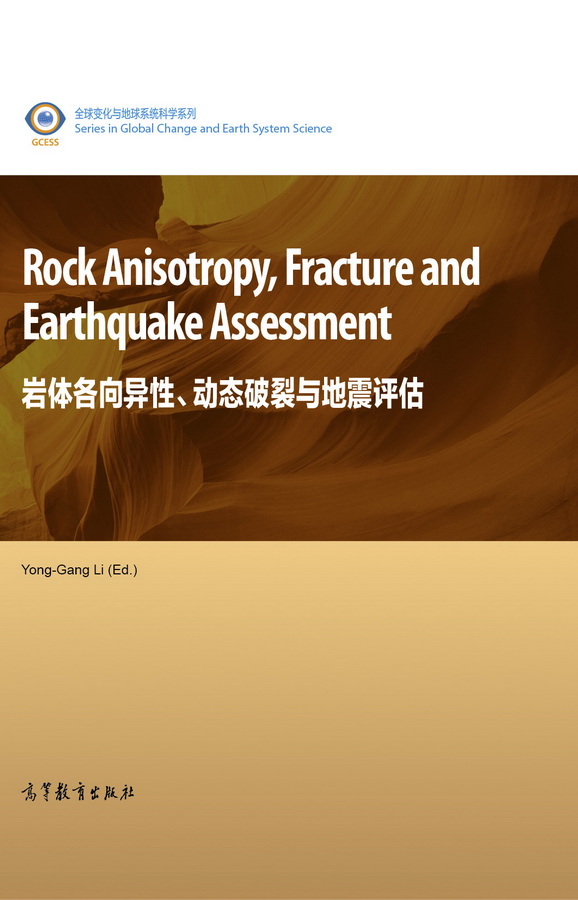中国的荒漠化及其防治(英文版)
作者: Longjun Ci,Xiaohui Yang
出版时间:2010-04
出版社:高等教育出版社
- 高等教育出版社
- 9787040257977
- 1版
- 227444
- 48266369-7
- 精装
- 特殊
- 2010-04
- 740
- 513
- 农学
- 自然保护与环境生态类
- P942.073-53
- 环境类
- 研究生及以上
Desertification and Its Control in China comprehensively discusses desertification from the views of formation, distribution, development and control models. This book truly elucidates basic theory and control models of desertification, especially the numerous results from research carried out for the UN Convention to Combat Desertification. This book will provide a theoretical and practical basis for ecological and environmental planning and design as well as guidelines for prevention/restoration for desertification projects. It will also provide practical examples.
Front Matter
1 Concept and Global Status of Desertification
1.1 Concept and scientific connotations of desertification
1.1.1 Definition of desertification
1.1.2 Theoretical background to desertification
1.1.3 Scientific basis for combating desertification
1.2 Current status of global desertification
1.2.1 Introduction to distribution of global desertification
1.2.2 Regional features of desertification-prone lands and strategies to combat desertification
1.2.3 Status of desertification and activities to combat desertification in most affected developing countries
References
2 Natural Background of China's Drylands
2.1 Deserts, Sandlands and the Gobi
2.1.1 Deserts
2.1.2 Sandlands
2.1.3 Gobi
2.2 Loess Plateau
2.2.1 Geomorphological features of the Loess Plateau
2.2.2 Soil
2.2.3 Climatic characteristics of the Loess Plateau
2.2.4 Vegetation
2.3 Loess-desert transitional belt
2.3.1 Role of deserts in the formation of loess
2.3.2 Distribution of the Loess
2.3.3 Physical properties of the loess
2.3.4 Loess-desert transitional belt
2.4 Droughts
2.4.1 Historical record of climate change and droughts
2.4.2 Climatic change and droughts in modern times
2.4.3 Possible trends in droughts
2.5 Sand-dust storms
2.5.1 Sand-dust storms and their main sand sources
2.5.2 Factors influencing sand-dust storms occurrence in China
2.5.3 Relationship between sand-dust storm frequency and desertification
2.5.4 Sand-dust storms affecting Beijing
References
3 Natural Resources and their Utilization in the Drylands of China
3.1 Climate resources and their potential capability
3.1.1 Solar radiation and photosynthetic production potential
3.1.2 Temperature and the light-temperature production potential
3.1.3 Precipitation and light-temperature-water production potential
3.2 Land resources and prospects for agricultural development
3.2.1 Quality, quantity, and use status of land resources and existing problems
3.2.2 Development potential of agriculture and measures to develop the land production potential
3.3 Water resources and ecological water use
3.3.1 Type, quantity and distribution of water resources in drylands
3.3.2 Water resources use status and existing problems
3.3.3 Strategies for water resources development and managing water utilization
3.4 Protection and utilization of biological resources
3.4.1 Biological resources and their current status of utilization
3.4.2 Specific biological resources and their industrial development
3.5 Mineral resources and their development and utilization prospects
3.5.1 Metal mineral resources
3.5.2 Non-metal mineral resources
3.5.3 Energy resources
References
4 Sandy Deserts, Gobi, Sandlands and Sandified Land in Dryland
4.1 General situation of sandy deserts, Gobi, sandlands and sandified land
4.1.1 General distribution range of sandy deserts, Gobi, sandlands and sandified land
4.1.2 Distribution of sandy deserts, Gobi, sandlands and sandified land
4.1.3 Development trend and current situation of land sandification
4.2 Sandy deserts, Gobi and sandified land in Xinjiang Uygur Autonomous Region
4.2.1 Sandy deserts, Gobi and sandified land status and distribution
4.2.2 Effects of sandification
4.3 Inner Mongolia Autonomous Region
4.3.1 Present situation, type and areas of deserts, Gobi, sandland and sandified land
4.3.2 Effects of sandification
4.4 Tibet Autonomous Region
4.4.1 Bioclimatic zones of desertified land on the Tibetan Plateau
4.4.2 Types of desertified lands on Tibetan Plateau
4.4.3 Driving force of desertification
4.4.4 Hazards and pressures of desertification on the environment and development
4.5 Gansu Province
4.5.1 Current situation and distribution of deserts, Gobi and sandified land
4.5.2 Effects of sandification
4.6 Qinghai Province
4.6.1 Current situation and distribution of deserts, Gobi and sandified land
4.6.2 Effects of sandification
4.7 Ningxia Hui Autonomous Region
4.7.1 Current situation and distribution of deserts, Gobi, sandlands and sandified land
4.7.2 Effects of sandification
4.8 Shaanxi Province
4.8.1 Distribution of sandlands and sandified land
4.8.2 Effects of sandification
4.9 Other provinces and cities
4.9.1 Beijing
4.9.2 Tianjin
4.9.3 Hebei Province
4.9.4 Shanxi Province
4.9.5 Liaoning Province
4.9.6 Jilin Province
4.9.7 Heilongjiang Province
References
5 Water Erosion in the Drylands of China
5.1 Distribution of water erosion and its regional characteristics
5.1.1 Distribution scope
5.1.2 Regional characteristics (Tang et al., 2004)
5.2 Damage from soil erosion
5.2.1 Impacts of soil erosion on land productivity
5.2.2 Water erosion and water quality
5.2.3 Water erosion and mud and silt sedimentation
5.3 Fundamental water erosion control measures
5.3.1 Small watershed management
5.3.2 Small watershed management on the Loess Plateau
References
6 Soil Salinization
6.1 Causes of soil salinization
6.1.1 Climate and soil salinization
6.1.2 Landform, geomorphology and soil salinization
6.1.3 Soil parent materials and soil salinization
6.1.4 Hydrogeological conditions
6.1.5 Human activities and soil salinization
6.1.6 Biological salt accumulation
6.2 Distribution of salt-affected soils
6.2.1 Salt-affected soil zone in extremely arid desert
6.2.2 Salt-affected soil zone in arid desert and desert steppe
6.2.3 Salt-affected soil zone in arid and semi-arid steppe region
6.2.4 Soda salt-affected soil zone in semi-arid and semi-humid climates
6.2.5 Salinized soda alkalized salt-affected soil zone in semi-humid monsoon climates
6.2.6 Coastal salt-affected soil zone in semi-humid and humid monsoon climate
6.2.7 Salt-affected soil zone in high altitude cold deserts, lakes and basins
6.3 Soil salinization damage and control
6.3.1 Impact of salts on plant germination and establishment
6.3.2 Effect of salts on plant photosynthesis and metabolization
6.3.3 Effect of salts on ion poison and nutrient absorption maladjustment
6.3.4 Effect of salts on soil physico-chemical properties and biological properties
6.3.5 Effect of salts on crop quality
6.4 Improvement of salt-affected soils
6.4.1 Progress in salt-affected soil improvement research in China
6.4.2 Achievements in salt-affected soil improvement in the past 60 years
6.4.3 Integrated management of soil salinization
References
7 Steppe Degradation and Rehabilitation in Northern China
7.1 Territorial distribution of steppe and natural geographic conditions
7.1.1 Evolution and territorial location of steppe in northern China
7.1.2 Geological and geomorphologic conditions in steppe areas
7.1.3 Climate conditions of the steppe areas
7.1.4 Hydrological conditions of the steppe areas
7.1.5 Soil conditions of the steppe areas
7.2 Steppe types, landscape ecological structure, and its regional characteristics
7.2.1 Botanical composition of steppe and the differentiation of steppe types
7.2.2 Main types of steppes
7.2.3 Ecological structure and regional differentiation of steppe landscape
7.3 Steppe degradation mechanisms
7.3.1 Causes of steppe degradation
7.3.2 Imbalance in material and energy flows in the steppe ecosystem
7.3.3 Deterioration of primary productivity in degraded steppes
7.3.4 Rehabilitation of degraded steppe
7.4 Successional pattern and diagnosis of steppe degradation
7.4.1 Series and types of meadow steppe degradation
7.4.2 Series and types of typical steppe degradation
7.4.3 Series and types of desert steppe degradation
7.4.4 Distribution of degraded steppe
7.4.5 Diagnosis of steppe degradation
7.4.6 Moisture and nutrient regime of degraded steppe
7.5 Restoration and rehabilitation of degraded steppe
7.5.1 Restoration and succession of degraded steppe
7.5.2 Changes in primary productivity of plant communities during restoration
7.5.3 Relationship between primary productivity of the community and water resources during the restoration succession
7.5.4 Changes in community density during restoration succession
7.5.5 Improvement in herbosa composition after the enclosure of degraded steppe
7.5.6 Amelioration of loose soil on the degraded steppe
7.5.7 Effect of burning on steppe degradation
References
8 Biological and Technical Approaches to Control Windy Desertification
8.1 Classification of site conditions in drylands
8.1.1 Features of site conditions of drylands
8.1.2 Categories of main types of site conditions in drylands
8.1.3 Selection of plant species for reforestation with different site conditions
8.2 Development of vegetation protection techniques
8.2.1 Vegetation protection planning
8.2.2 Construction project of dryland revegetation
8.2.3 Function of the vegetation protection project
8.3 Principles and techniques for enclosing degraded lands
8.3.1 Vegetation reservation measures and their significance for combating desertification
8.3.2 Methods and techniques of enclosure
8.3.3 Appropriate use of vegetation reservation measures
8.3.4 Case studies of vegetation reservation measures in China and internationally
8.3.5 Limitations of enclosure and vegetation reservation measures and future trends
8.4 Large scale transformation and rejuvenation of natural desert vegetation
8.4.1 Natural desert or sandland vegetation in China
8.4.2 Role of natural desert or sandland vegetation
8.4.3 Technology for the rejuvenation of natural desert or sandland forests
8.4.4 Integrated application of preventive measures and techniques for revegetation
8.5 Principles and technology for establishing oasis shelterbelts
8.5.1 Necessity of establishing oasis shelterbelts
8.5.2 Establishment of oasis protective systems
8.5.3 Function of oasis protective windbreak systems
References
9 Engineering and Technological Measures for Combating Desertification
9.1 Mechanical stabilization and releasing accumulated sand
9.1.1 Mechanical sand blocking techniques
9.1.2 Mechanical sand releasing and transporting techniques
9.2 Mechanical sand barriers to control shifting sands
9.2.1 Types and principles of mechanical sand barriers
9.2.2 Technical criteria for designing sand barriers
9.2.3 Methods for installing sand barriers
9.2.4 Effectiveness of sand barriers
9.3 Chemical measures for sand stabilization
9.3.1 Asphalt emulsion for sand stabilization
9.3.2 Asphalt compounds for sand stabilization
9.3.3 Latex emulsion for sand stabilization
9.3.4 Peat emulsion for sand stabilization
9.3.5 Adhesive agents for sand stabilization
9.4 Hydraulic engineering measures to combat desertification
9.4.1 Storage and drainage engineering on slopes
9.4.2 Engineering in gullies and hilly valleys
9.4.3 Floodwater and debris flow discharge engineering
9.4.4 Irrigation engineering
9.4.5 Runoff-harvesting engineering
References
10 Optimized Sustainable Eco-production Paradigms in Drylands
10.1 Three-circle eco-production paradigm in drylands
10.1.1 Physical geography background for the three-circle eco-production paradigm
10.1.2 Structure of the three-circle eco-production paradigm
10.2 Mountain-basin paradigm in arid deserts
10.2.1 Mountain-basin paradigm in arid deserts
10.2.2 Green Bridge System --- an example from the north foot of Tianshan Mountain, Xinjiang
10.3 Other eco-production paradigms
10.3.1 Integrated animal husbandry paradigm in the Inner Mongolia Steppe and agropastoral transitional regions
10.3.2 Small watershed-based paradigm on the Loess Plateau
References
Subject Index
Latin Name Index
版权









